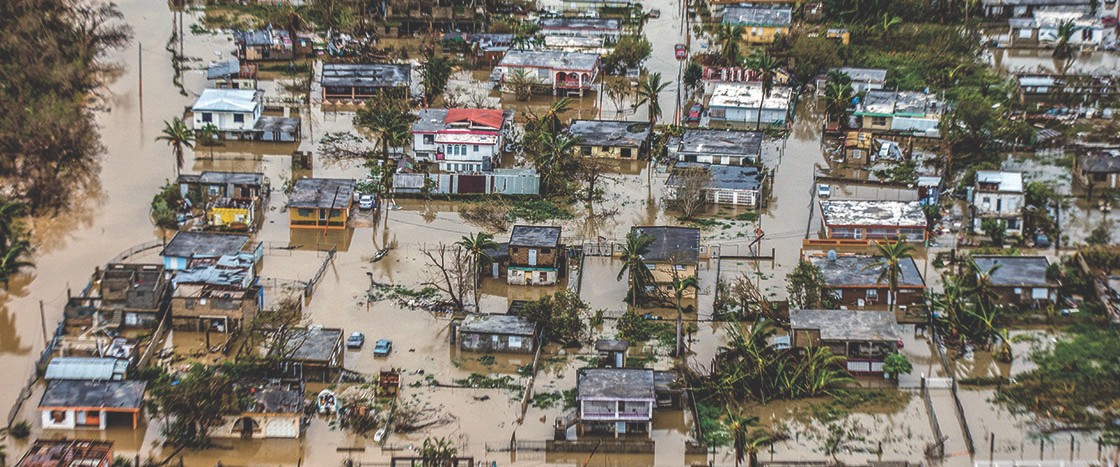Everywhere 15-year-old Salvador Gómez-Colón looked, he saw only destruction and hopelessness.
It was strange for Salvador to think about how just a few days earlier he had been living a happy life in San Juan, the capital of Puerto Rico, an island in the Caribbean Sea. He went to school and swim practice and loved wandering through the cobblestone streets of Old San Juan, taking photographs of the beautiful churches and bright turquoise and pink houses that had stood for centuries. He spent hot afternoons in the refreshing shade at the park by his apartment, where kids rode bikes and tossed balls beneath the thick canopy of trees.
But now, that life was gone.
The day before—September 20, 2017—Hurricane Maria had torn across the island. To Salvador, it looked like an atomic bomb had been dropped. The streets were a tangle of fallen power lines, wrecked cars, and collapsed buildings. Homes were flooded with debris-filled water. Nearly every tree in Salvador’s beloved park had been snapped in half or ripped from the ground.
Puerto Rico was in ruins. There was no electricity. No cell phone service. No internet. No way to contact loved ones and find out if they were OK.
That evening, Salvador watched the golden sun sink below the horizon and darkness envelop the island. A feeling of hopelessness crept over him. He imagined families in the pitch-black night stumbling around the broken shells of their homes. What if they fell and hurt themselves? With hospitals barely functioning—if at all—and no way to call for help, what would happen to people?
“To me, that sun setting was hope leaving,” Salvador says.
But what could he do?
Everywhere 15-year-old Salvador Gómez- Colón looked, he saw ruin and hopelessness.
Just days before, Salvador had been living a happy life in San Juan, the capital of Puerto Rico, an island in the Caribbean Sea. He went to school and swim practice. He walked through the streets of Old San Juan, taking pictures of the beautiful churches and bright turquoise and pink houses that had stood for centuries. He spent hot afternoons in the park near his home.
But now, that life was gone.
The day before—September 20, 2017—Hurricane Maria had hit the island. To Salvador, it looked like an atomic bomb had been dropped. The streets were filled with fallen power lines, wrecked cars, and collapsed buildings. Homes were flooded with dirty water. Trees had been snapped in half or ripped from the ground.
Puerto Rico was in ruins. There was no electricity, no lights, no cell phone service, no internet—no way to contact loved ones and find out if they were OK.
That evening, as the sun set, Salvador watched the island go dark. A feeling of hopelessness crept over him. He imagined people in the pitch-black night stumbling around the broken shells of their homes. What if they fell? With hospitals barely operating and no way to call for help, what would happen to them?
“To me, that sun setting was hope leaving,” Salvador says.
But what could he do?


